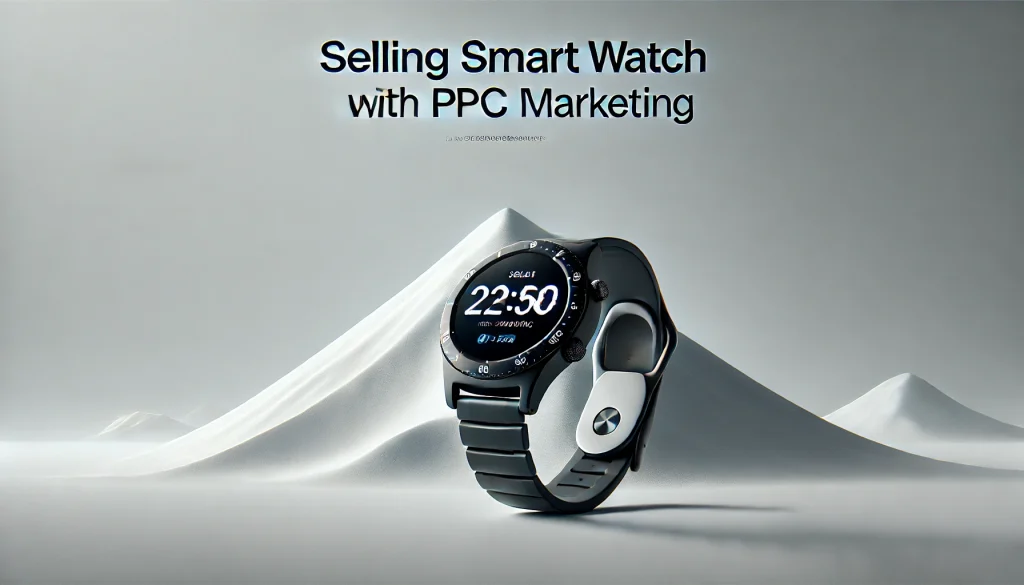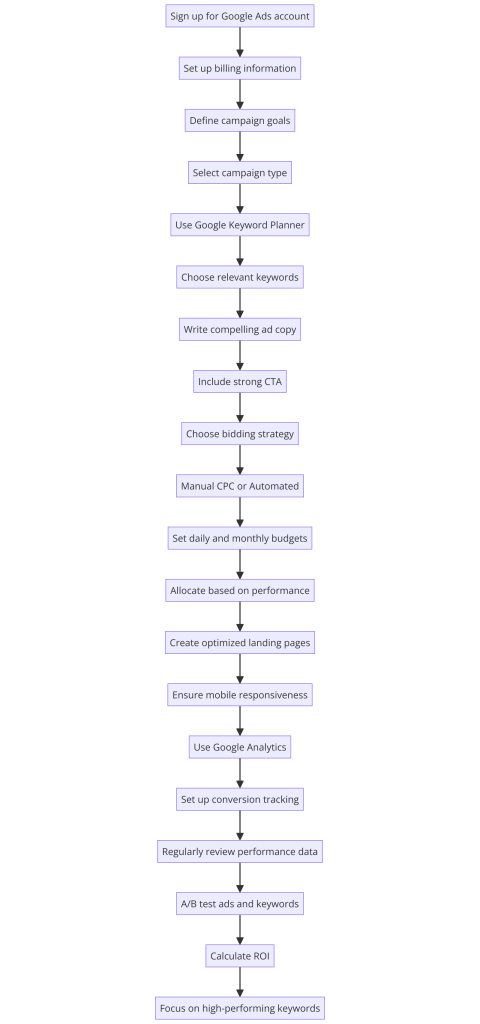A Practical Guide to Pay Per Click PPC An End-to-End Journey for Selling Smart Watches Online
Introduction to PPC Marketing
Pay-Per-Click (PPC) marketing is an online advertising model where advertisers pay a fee each time their ad is clicked. It’s a way to buy visits to your site rather than attempting to “earn” those visits organically. PPC is a highly effective way to drive targeted traffic to your website and increase sales. This article provides a Practical Guide to Pay Per Click PPC Marketing
Table of Contents
Concept of PPC Marketing
How PPC Works
- Advertiser Creates an Ad: You create ads for your product or service, specifying keywords that trigger your ads.
- Bidding on Keywords: Advertisers bid on the keywords they want their ads to show for. The bid amount determines the ad’s placement in search engine results.
- Ad Auction: When a user searches for a keyword, an auction determines which ads will be displayed based on bids and relevance.
- User Clicks Ad: You pay the bid amount each time a user clicks on your ad, hence the term “pay-per-click.”

Benefits of PPC
- Immediate Results: Unlike SEO, which can take months, PPC can drive traffic and sales almost immediately.
- Targeted Reach: PPC allows you to target specific demographics, locations, and even times of day.
- Measurable ROI: You can track every aspect of your PPC campaign, from impressions to conversions.
A Practical Guide to Pay Per Click PPC Marketing
Step 1: Setting Goals and Budget
- Define Your Goals: Determine what you want to achieve with your PPC campaign (e.g., increase sales, drive website traffic, build brand awareness).
- Set a Budget: Decide how much you’re willing to spend on your PPC campaign. For beginners, starting with a modest budget is advisable and increasing it as you see results.
Step 2: Keyword Research
- Identify Keywords: Use tools like Google Keyword Planner, SEMrush, or Ahrefs to find relevant keywords for your product. For a smart watch, keywords might include “buy smart watch,” “best smart watch,” “affordable smart watches,” etc.
- Analyze Competitors: Look at what keywords your competitors are using and identify gaps you can exploit.
Step 3: Creating Compelling Ads
- Ad Copy: Write clear, concise, and compelling ad copy that highlights the unique selling points of your smart watch.
- Ad Extensions: Use ad extensions to provide additional information like site links, callouts, and reviews to make your ad more attractive.
Step 4: Setting Up the Campaign
- Choose the Right Platform: Google Ads is the most popular, but consider Bing Ads, Facebook Ads, or Instagram Ads depending on where your audience spends time.
- Create Ad Groups: Organize your keywords into ad groups for better targeting and relevance.
- Set Bids: Decide how much you’re willing to pay per click for each keyword.
Step 5: Launching the Campaign
- Monitor and Adjust: Keep a close eye on your campaign’s performance. Use analytics tools to track metrics like click-through rates (CTR), cost per click (CPC), and conversions.
- A/B Testing: Continuously test different ad copies, images, and strategies to see what works best.
Practical Example: Selling Smart Watches Online

Step-by-Step Example
- Product Details: Let’s say you’re selling a smart watch priced at $100.
- Budget and Bidding: Start with a budget of $500 for your PPC campaign. Set a maximum bid of $1 per click.
- Keyword Research: Using Google Keyword Planner, identify high-volume, low-competition keywords. Examples:
- “buy smart watch” (2,000 searches/month)
- “best smart watch 2024” (1,500 searches/month)
- “smart watch for fitness” (1,000 searches/month)
- Creating Ads:
- Ad Copy Example:
- Headline 1: “Best Smart Watches 2024”
- Headline 2: “Affordable Prices, Free Shipping”
- Description: “Discover the latest smart watches with top features. Order now and enjoy free shipping on all orders!”
- Ad Copy Example:
- Setting Up Campaign on Google Ads:
- Campaign Name: “Smart Watch Sales Campaign”
- Ad Groups: Create separate ad groups for each keyword theme (e.g., fitness, best smart watches, affordable smart watches).
- Targeting: Set geographical targeting to the US. Set demographic targeting to ages 18-45, tech-savvy individuals.
- Launch and Monitor:
- Monitor daily to track clicks, CTR, and conversions.
- Use Google Analytics to track on-site behavior and conversion paths.
Expected Results
- Clicks: With a budget of $500 and a CPC of $1, you can expect up to 500 clicks.
- Conversions: Assuming a 2% conversion rate, you could potentially make 10 sales.
- Revenue: 10 sales at $100 each equals $1,000 in revenue.
Tools and Resources
Recommended Tools
- Google Keyword Planner: For keyword research.
- Google Analytics: To track website performance.
- SEMrush/Ahrefs: For advanced keyword and competitor analysis.
- Canva: For creating compelling ad visuals.
- Mailchimp: For integrating email marketing with PPC campaigns.
Recommended Articles
YouTube – A Practical Guide to Pay Per Click PPC Marketing
Flow Diagram – A Practical Guide to Pay Per Click PPC Marketing

Conclusion
Running a successful PPC campaign requires strategic planning, careful execution, and continuous optimization. By following this guide, you can create and manage a PPC campaign to sell smart watches or any other product. Start with clear goals, conduct thorough keyword research, craft compelling ads, and monitor your campaign’s performance to achieve the best results. With practice and persistence, you’ll be able to master PPC marketing and drive significant growth for your business.

1 comment
[…] A Practical Guide to Pay Per Click PPC Marketing – 5 Steps – Exceediance […]
Comments are closed.